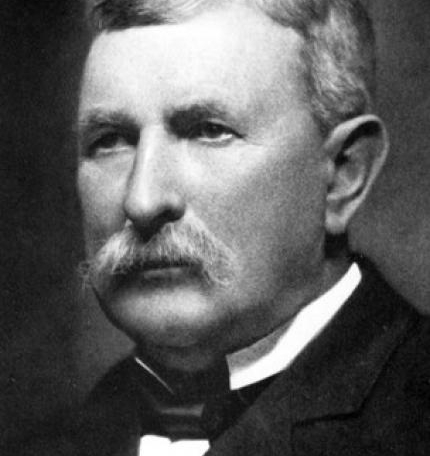Four non-Communist Concord capitalists who merit historical markers
The saga of the Elizabeth Gurley Flynn state historical marker drags on. Flynn—a labor leader, feminist, founding member of the American Civil Liberties Union, and an avowed member and chairperson of the Communist Party USA—was recognized this spring with a historical highway marker in her hometown of Concord.
Facing immediate backlash, the state removed “the rebel girl’s” marker soon after erecting it. The state now faces a lawsuit claiming it didn’t follow the rules for removal.
As state leaders debate whether or not to recognize a Communist who left the Granite State when she was about 10 years old, led the Communist Party USA, and received a Soviet state funeral in 1964, let’s not overlook the Concord capitalists who built companies and invented products that improved lives.
Putting their own ingenuity to use, these inventors and entrepreneurs made a lasting impact on the New Hampshire and American economies. Comrade Gurley Flynn became a celebrity through her writing and organizing. These capitalists, on the other hand, received far less attention while helping to build the New Hampshire and U.S. economies, create jobs, and advance their fields.
Levi Hutchins
If you set an alarm to help wake up at a certain time this morning, you can thank Levi Hutchins. Born in 1761, Hutchins lived in Concord from 1772 to 1777 and 1780 to 1855. And it was in Concord where Hutchins invented the first American alarm clock.
Trained as clockmakers, Hutchins and his brother Abel opened their clockmaking shop on Main Street in Concord in 1786 and were successful businessmen. Hutchins understood the need for many to wake up on time for work, including himself. While alarm clocks were already in Europe, Hutchins was determined to bring one to America.
In 1787, Hutchins designed and built the first American alarm clock. It was constructed in a 29-inch by 14-inch wooden cabinet, and each clock could only be set for one specific time (in Hutchins’s case, 4 a.m.). Hutchins never bothered to patent his clock or mass produce it. But he did wake up on time for the rest of his life and tinker his way into the history books.
Sylvester Marsh
A stalwart of New Hampshire’s significant tourist economy, the Mount Washington Cog Railway was the first of its kind in the world when Sylvester Marsh designed and built it.
Marsh was born in 1803 and lived in Concord for the last five years of his life. An American entrepreneur, Marsh’s inspiration for the railway came from his near-death experience hiking Mount Washington in 1852 during a storm. Locomotives at the time weren’t able to climb Washington’s steep incline, so Marsh had to invent a new railway—the cog rail.
Though some state lawmakers laughed at Marsh, the Legislature gave him exclusive rights to a Mount Washington railway in 1858. And since 1869, the Cog has made regular trips year-round to the top of the tallest mountain in the Northeast as one of the Granite State’s oldest, most popular attractions and a boon to its economy. (Marsh is mentioned in the Cog Railway’s historical marker in the White Mountains but doesn’t have one of his own.)
Benjamin Ames Kimball
Northeastern railroad giant and Concord resident from 1854 to 1920, Benjamin Ames Kimball, born in 1833, was a railroad engineer, mechanic, and manufacturer, as well as a consequential figure in railroad expansion in New England.
Starting as a draftsman in the shops of the Concord Railroad, Kimball worked his way up to designing locomotives and running the locomotive department. He left to found his own manufacturing company and later returned as a director of the Concord Railroad. In 1879, Kimball led the merger of the Concord Railroad with the Boston, Concord, and Montreal Railroad, forming the Concord and Montreal Railroad in 1889. Serving as its president from 1895 to 1920, the Concord and Montreal Railroad was the principal railroad in the state under Kimball’s leadership.
The leading railroad figure in New Hampshire, Kimball is credited with overseeing a booming system that accelerated the state’s economy and facilitated increased tourism to the Lakes Region and White Mountains.
Benjamin Holt
Go to any construction site in the country, and chances are you’ll see Caterpillar Inc. equipment on the job. The origins of both the company and the machinery can be traced back to one man: Benjamin Holt.
Born in 1849 in Concord, Holt was an inventor who owned more than 45 patents. He’s best known, however, for inventing in 1904 the first successful track-type tractor—called the “Caterpillar”—a product that Caterpillar Inc. still uses.
Determined to create a vehicle to help farmers, Holt and his company, Holt Manufacturing, designed a track-laying system that would allow heavy tractors to move over soft soil and mud. With his track-type tractor, Holt became the father of mechanized farming.
During World War I, Holt even supplied treads for U.S. and British tanks.
Holt Manufacturing later merged with a competitor to form Caterpillar Tractor Co., which eventually became Caterpillar Inc., the largest manufacturer of earth-moving equipment in the world.
Though Holt did not receive a state funeral in Moscow, he fed more Soviets than Concord-born Communist hero Gurley Flynn ever did. During the Great Depression, the Soviet government needed agricultural equipment that its socialist, command economy couldn’t produce. So, they bought American tractors and combines from Caterpillar.



